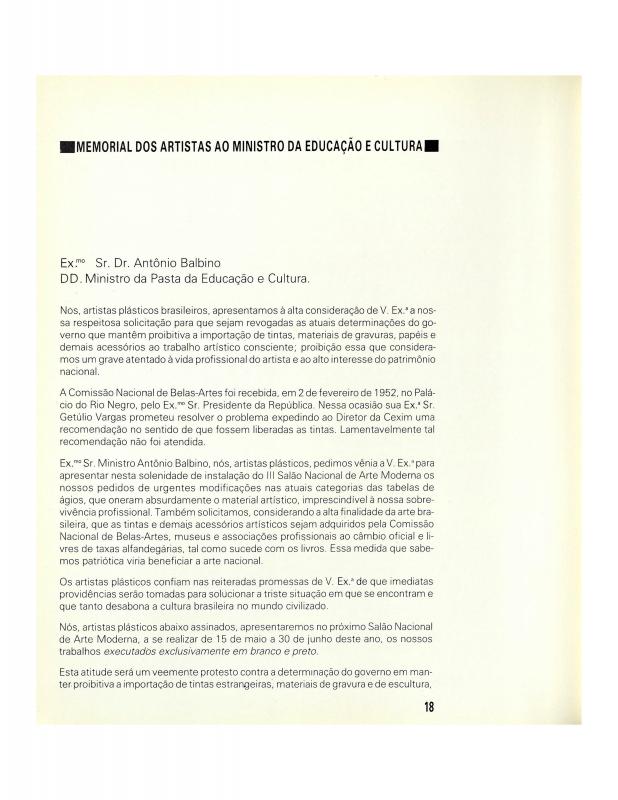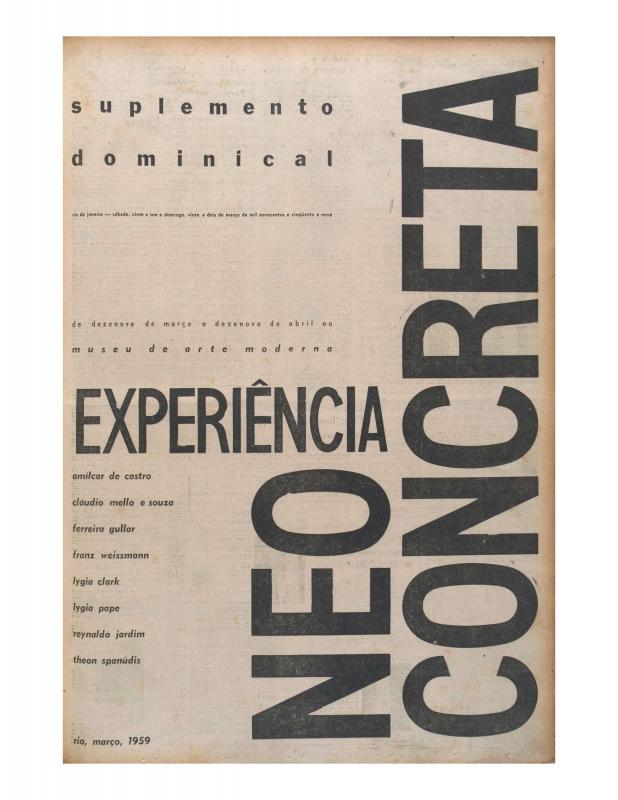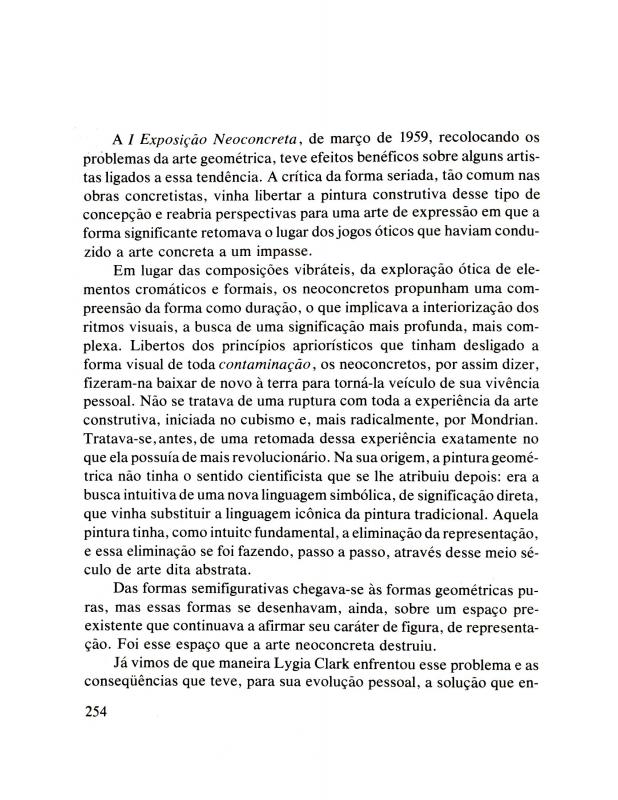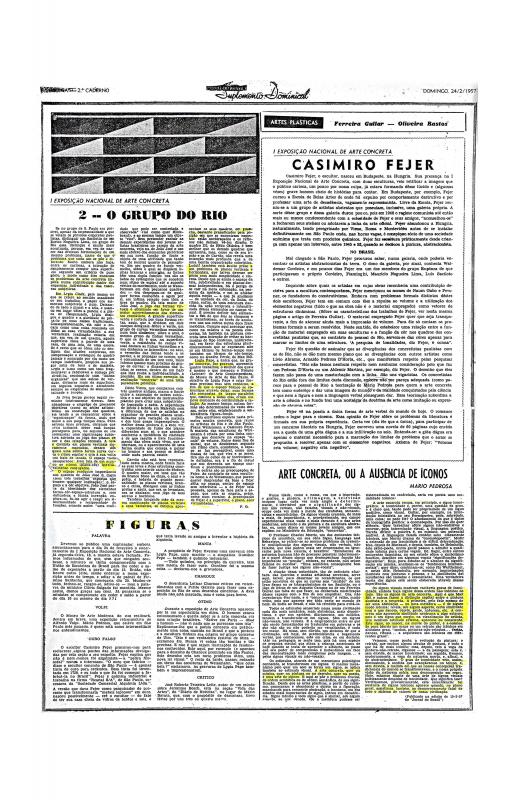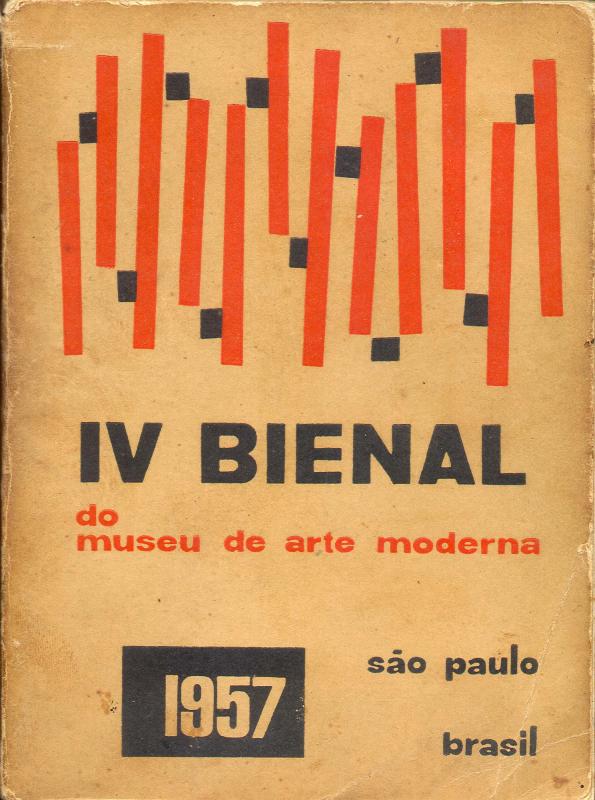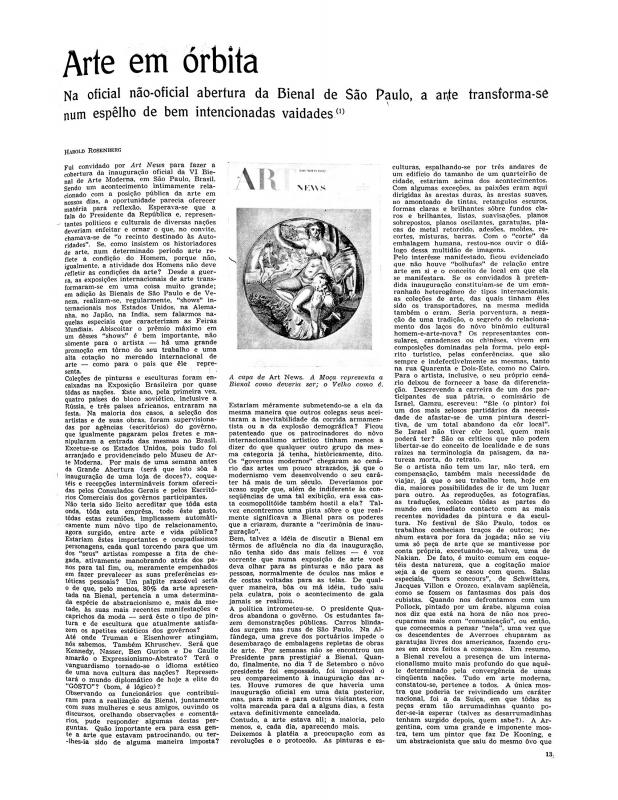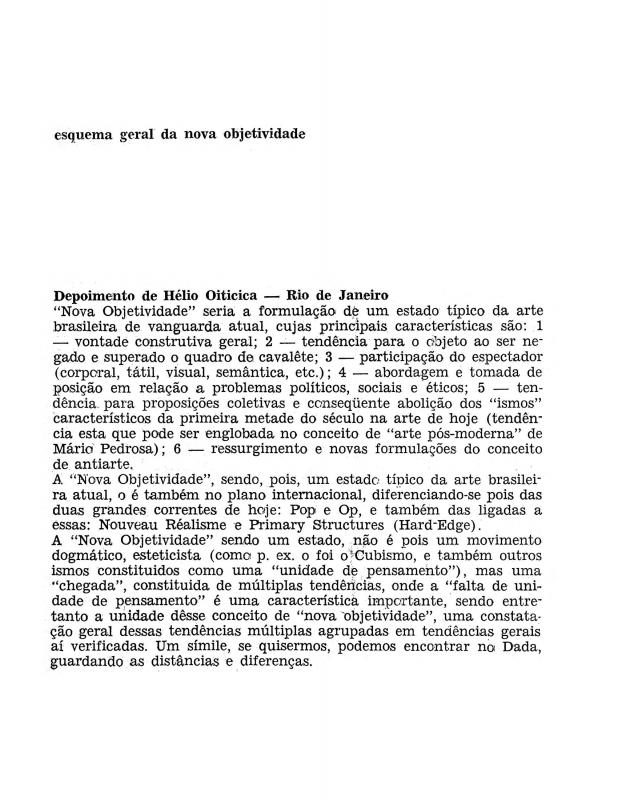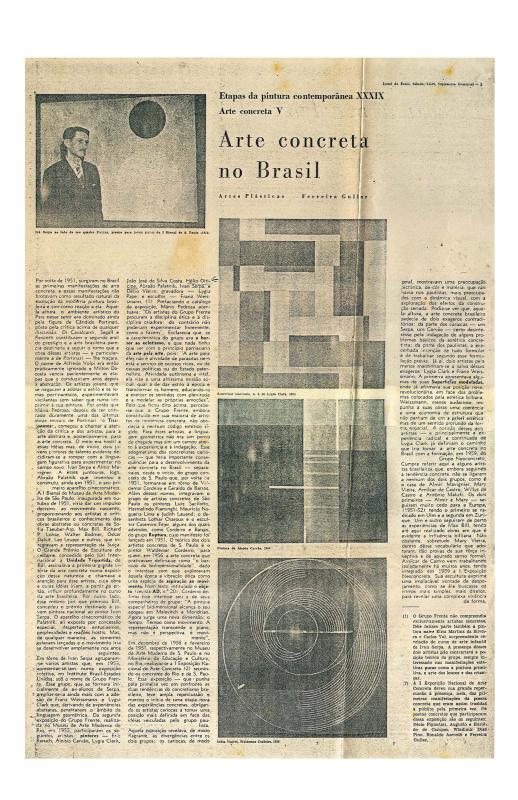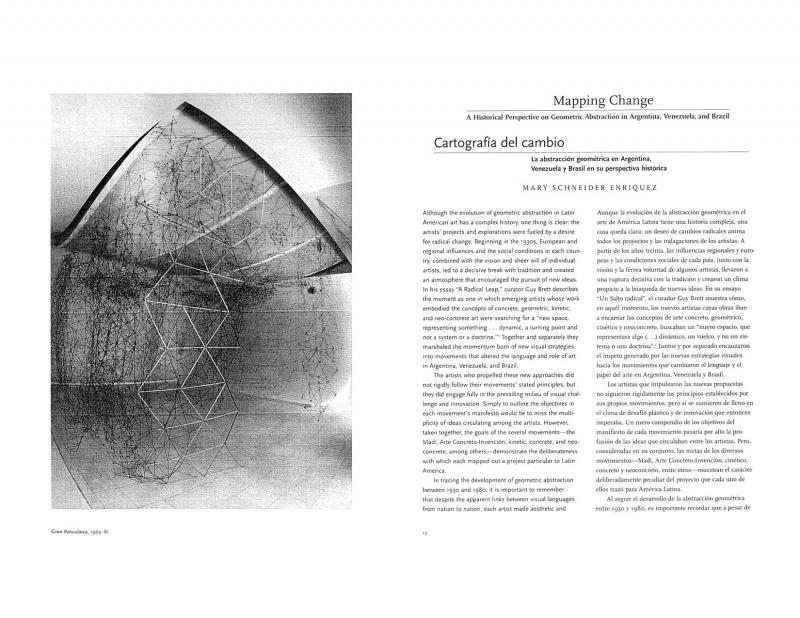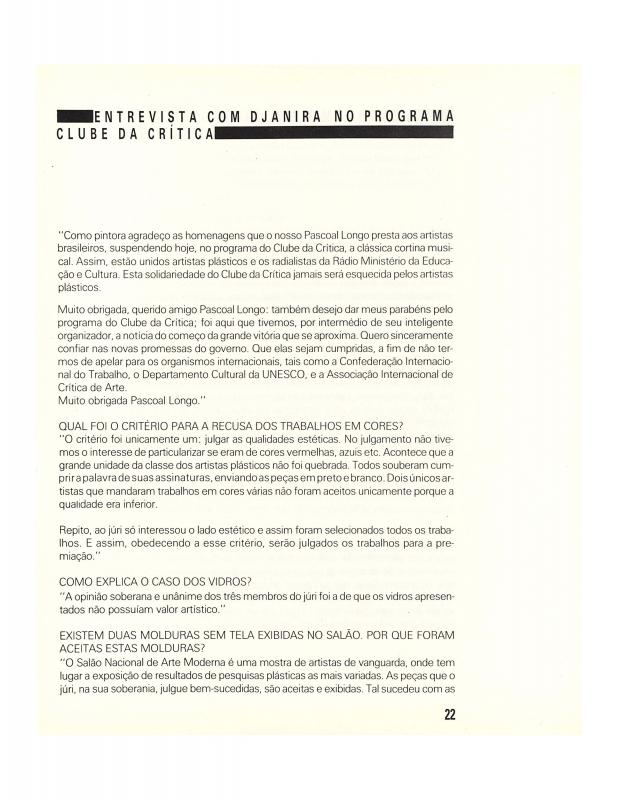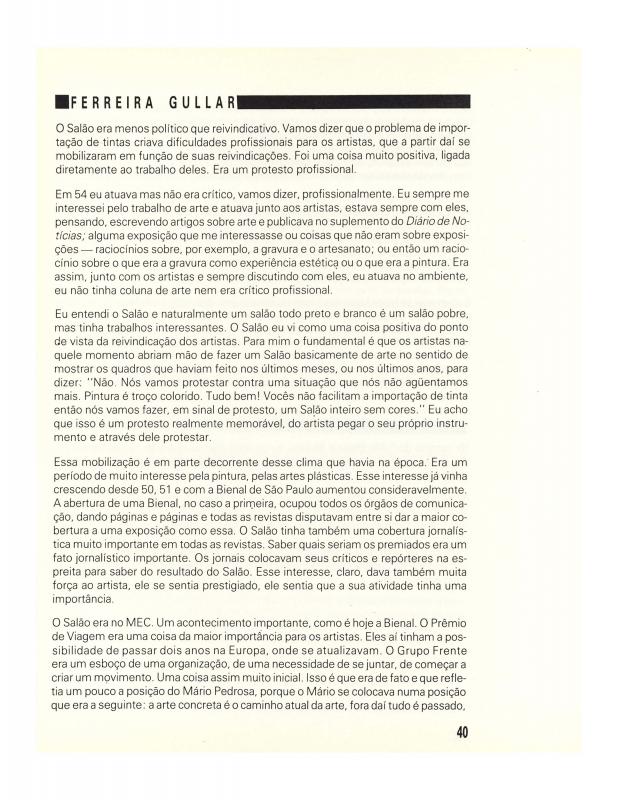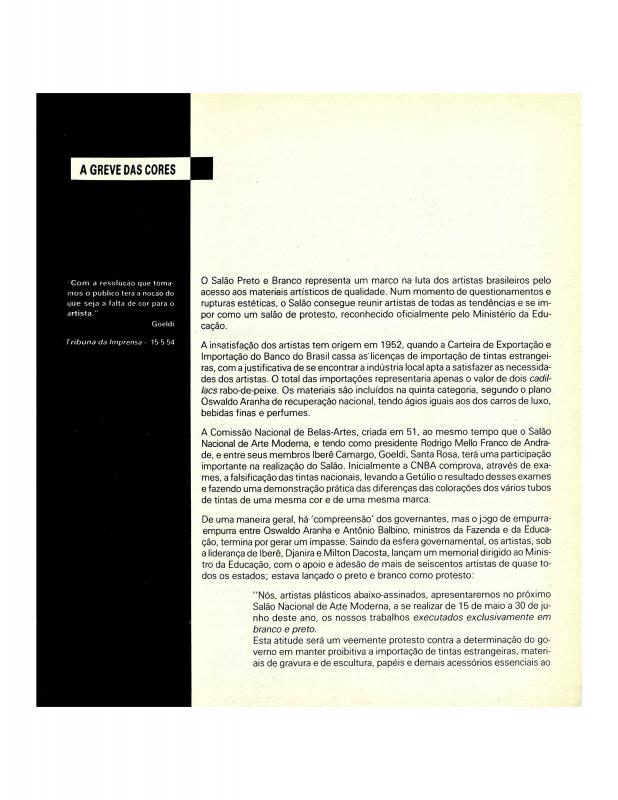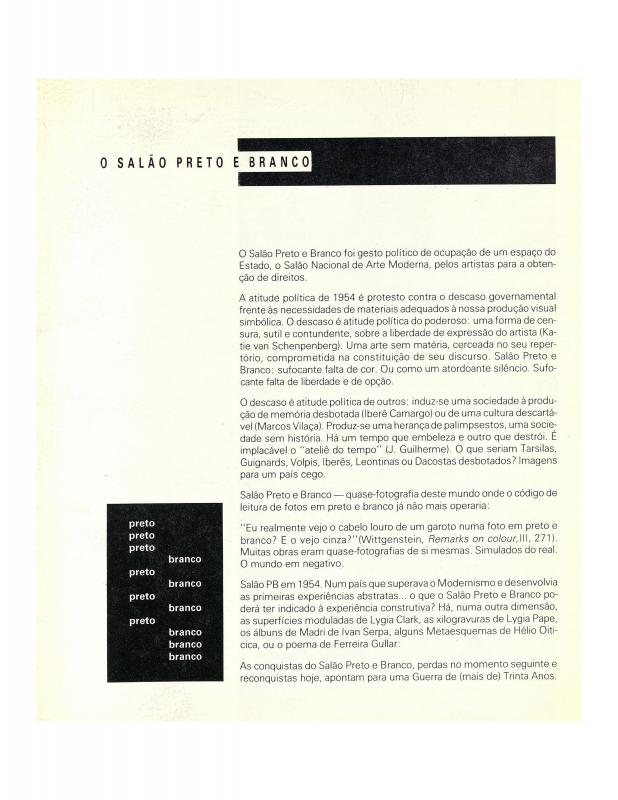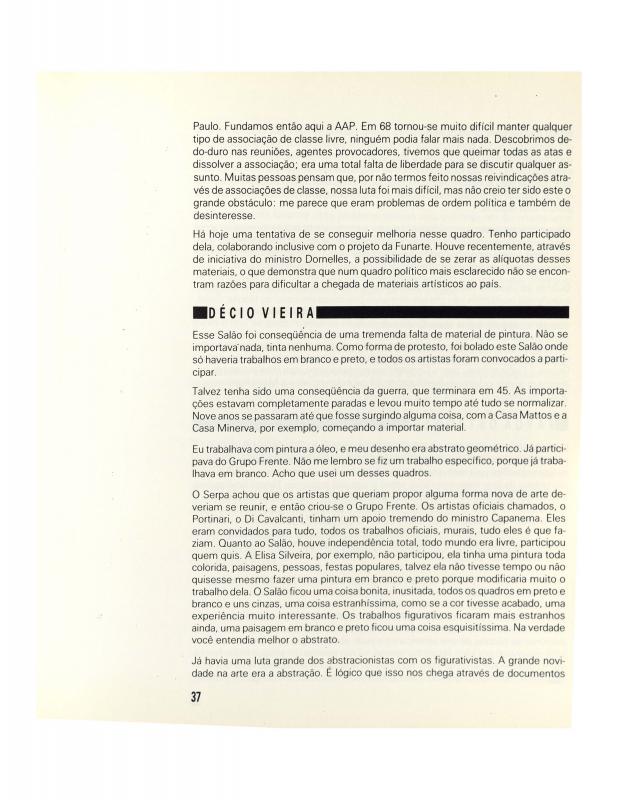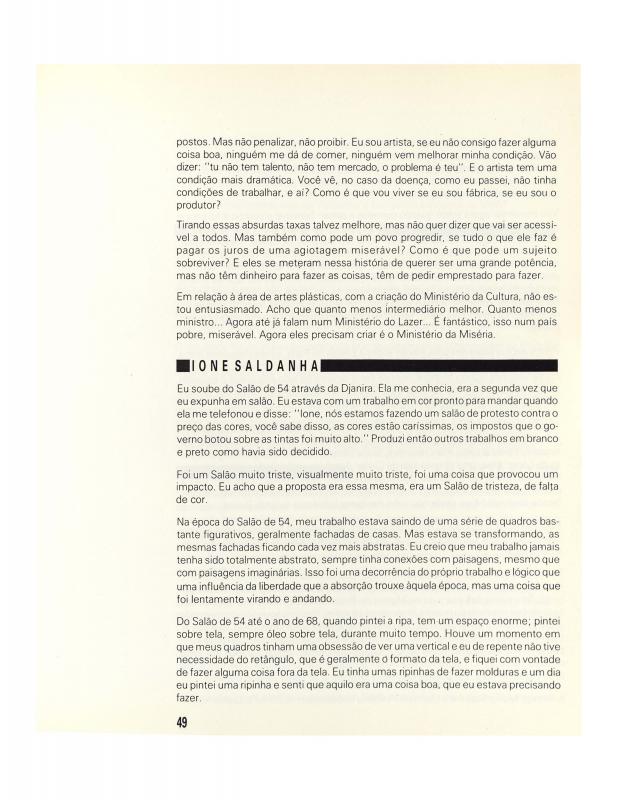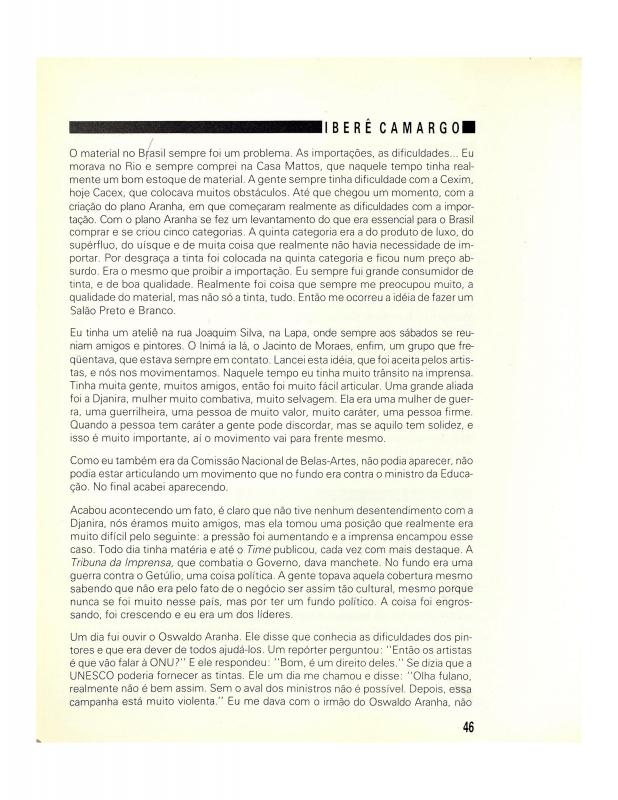The Salão Nacional de Arte Moderna was presented for the first time in 1952 in the wake of the División Moderna (Modern Division) at the Salão Nacional de Belas Artes. The third edition, which came to be known as the Salão Preto e Branco (Black-and-White Salon), opened on May 15, 1954. Participating artists protested against the poor quality of available art materials (mainly substitutes for imported products) due to import restrictions imposed by the Brazilian government. Led by Iberê Camargo, Milton Dacosta, and Djanira, six hundred artists from all over the country signed a manifesto addressed to the Ministério da Educação e Saúde (MES), the Ministry of Education and Health in the Getúlio Vargas administration, objecting to any restrictions on the import of paint, items used for printmaking and sculpture, paper, and other basic materials [see, in the ICAA digital archive: doc. no. 1307648]. According to Gloria Ferreira the decision to show nothing but black and white works prompted some artists to stop “copying natural objects” and try their hand at abstract art. Carvão confirms that, for some artists, the Salón Blanco y Negro wasn’t so much an exercise in style as a motivation to share explorations of abstraction and “the true construction of the idea.”
Aluísio Carvão (1920–2001) started painting in 1946; he moved to Rio de Janeiro on a grant from the Ministério da Educação e Cultura (MEC), the Brazilian Ministry of Education and Culture, in 1949. In 1952 he enrolled in Ivan Serpa’s freestyle painting class at the Museu de Arte Moderna do Rio de Janeiro (MAM-RJ), where he showed his work with members of the Grupo Frente at the first Exposição Nacional de Arte Abstrata, as well as other group events in 1954 and 1955, and at the original Exposição Nacional de Arte Concreta in 1956 in São Paulo. Carvão stopped painting figurative works and embraced a form of Geometric Abstraction guided by “optical rhythms;” his use of black and white therefore identified that transition. He then moved on to a Neo-Concrete approach, concentrating on in-depth explorations of color and space. In 1959 he signed the Manifesto neoconcreto (see doc. no. 1110328) and took part in exhibitions of Neo-Concrete art in Rio de Janeiro, São Paulo, and Salvador. In 1958 Carvão had a solo show at the Galeria de Artes das Folhas in São Paulo and contributed works to exhibitions of Brazilian modernism, including Konkrete Kunst organized by Max Bill in Zurich (1960), Nova Objetividade Brasileira at the MAM-RJ (1967), Projeto Construtivo Brasileiro na Arte (1977), Tradição e Ruptura (1984), Bienal Brasil Século XX (1994), and Arte Construtiva no Brasil: A Coleção Adolpho Leirner at the Museu de Arte Moderna de São Paulo (MAM-SP) and MAM-RJ (1999). In 1996 a retrospective of his work was held at the Museu Metropolitano de Arte in Curitiba, the Museu de Arte Moderna da Bahia, and the MAM-RJ. Carvão showed his work at several biennials in São Paulo, the fourth Tokyo Biennial, and the first Bienal Interamericana de México.
[For more information about Carvão, see “Cor e estrutura-cor” (doc. no. 1091219) and “Ia Exposição Nacional de Arte Concreta: 2 - O grupo do Rio” (doc. no. 1090217) by Ferreira Gullar; “IV Bienal do Museu de Arte Moderna” (doc. no. 1232311); and “Arte em órbita” by Harold Rosenberg and Bernardo Cid (doc. no. 1111186)].
[As regards the group show in Rio de Janeiro, see “Grupo Frente” by Mário Pedrosa (doc. no. 1083731); “Esquema geral da nova objetividade,” by Hélio Oiticica (doc. no. 1110372); “Arte concreta no Brasil: Etapas da pintura contemporânea XXXIX - Arte concreta V” by Ferreira Gullar (doc. no. 1090830); and “Mapping Change: A historical perspective on geometric abstraction in Argentina, Venezuela and Brazil” by Mary Schneider Enríquez (doc. no. 1217297)].
Carvão’s recollections (and those of other artists) appear in the book A Arte e seus materiais: Salão Preto e Branco, 3º Salão Nacional de Arte Moderna, 1954 (Art and its Materials: Black-and-White Salon, Third National Modern Art Salon, 1954), published on the occasion of the 1985 exhibition at the Galería Especial del Salão Nacional de Artes Plásticas. According to the book, the situation recalled the famous Black-and-White Salon in 1954 in which works by Camargo, Aluísio Carvão, Anna Letycia, Aldo Bonadei, Ivan Serpa, Lygia Clark, Maria Helena Andrés, Maria Leontina, Tarsila do Amaral, Ubi Bava, and many others were shown. The publication includes primary and secondary sources that refer to the 1954 exhibition, as well as interviews with contemporary artists and critics.
[For complementary reading on the subject of the Salão Preto e Branco (Black-and-White Salon), see: “Mensagem do Ministro da Educação e Cultura ao artistas” (doc. no. 1307663); “Entrevista com Djanira no programa clube da crítica” by Pascoal Longo (doc. no. 1307678); “Depoimentos: Ferreira Gullar” by Glória Ferreira and Luiza Interlenghi (doc. no. 1307732); “A greve das cores” by Glória Ferreira (doc. no. 1307631); “O Salão Preto e Branco” by Paulo Herkenhoff (doc. no. 1307599); the five following testimonials conducted by Luiza Interlenghi: “Depoimentos: Décio Vieira” (doc. no. 1307712); “Depoimentos: Ione Saldanha” (doc. no. 1307774); “Depoimentos: José Silveira D’Ávila” (doc. no. 1307791); “Depoimentos: Sérgio Camargo” (doc. no. 1307831); “Depoimentos: Ubi Bava” (doc. no. 1307851); and “Depoimentos: Iberê Camargo” (doc. no. 1307754) by Evelyn Yoschpe.]

